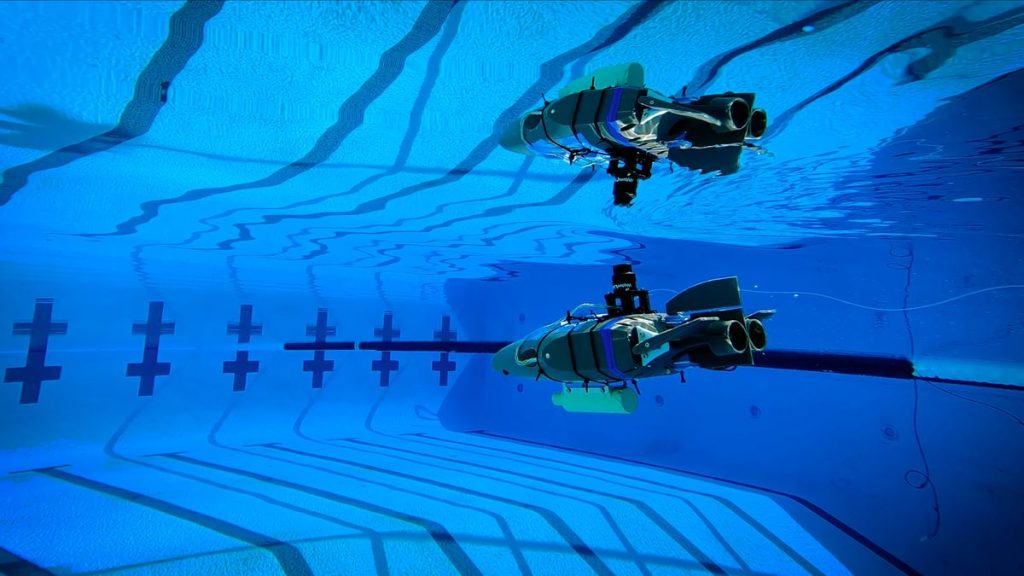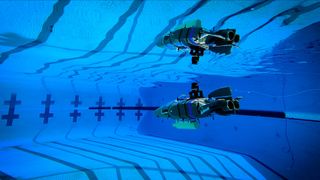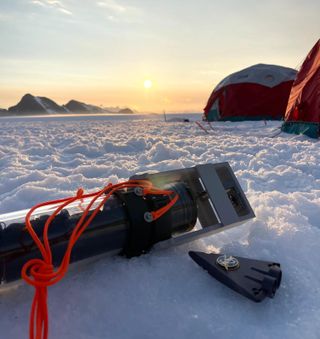
NASA tests cellphone-sized underwater robots for potential ocean world missions (video) (Image Credit: Space.com)
A swarm of tiny robots destined to search for life on a faraway moon recently began its journey in a swimming pool here on Earth.
The SWIM robots — short for Sensing With Independent Microswimmers — demonstrated impressive maneuverability during recent tests in the swimming pool at the California Institute of Technology (Caltech). Pushed along by propellers, the miniature, wedge-shaped robots steered themselves to stay on course, executed a back-and-forth “lawnmower” pattern, and even spelled out “J-P-L,” according to a NASA statement.
Designed to one day search for evidence of life in the briny ocean beneath the icy shell of Jupiter’s moon Europa, these robots could play a key role in detecting chemical and temperature signals that might indicate alien life, according to scientists at NASA’s Jet Propulsion Laboratory (JPL), who designed and tested the robots.
“People might ask, why is NASA developing an underwater robot for space exploration?” said Ethan Schaler, the project’s principal investigator at JPL. “It’s because there are places we want to go in the solar system to look for life, and we think life needs water.”
“We need robots that can explore those environments — autonomously, hundreds of millions of miles from home,” he added.
The latest prototypes are 3D-printed plastics put together using inexpensive, commercially-made motors and electronics. These robotic swimmers would eventually also be equipped with wireless underwater communication systems to transmit data and triangulate their positions while exploring the oceans of distant icy moons.
The robot used for the pool tests was about 16.5 inches (42 centimeters) long. The team hopes to eventually bring it down to about 5 inches (12 centimeters) long, no bigger than a cellphone. To ensure it could be rescued if needed during any of the 20 rounds of testing in the 25-yard (23-meter) pool, it was attached to a fishing line, with an engineer walking alongside carrying the rod.
“Underwater robots in general are very hard, and this is just the first in a series of designs we’d have to work through to prepare for a trip to an ocean world,” said Schaler. “But it’s proof that we can build these robots with the necessary capabilities and begin to understand what challenges they would face on a subsurface mission.”
Engineers are meanwhile testing SWIM robots in computer simulations that replicate the pressure and gravity the robots would encounter on the moon. By repeatedly sending such palm-sized robots in the search for signs of life in those virtual environments, scientists say they are optimizing the robots’ design and honing their abilities to collect science data in unknown terrains.
One key innovation created for the robotic swarm is a tiny, multi-sensor chip developed by engineers at Georgia Institute of Technology in Atlanta, capable of measuring temperature, pressure, acidity, conductivity, and chemical composition — all critical factors in the search for life.
It will be years before the bots can wade through Europa’s hidden ocean, which scientists suspect harbors twice as much liquid water than all of Earth’s oceans combined. Thanks to this vast, subsurface ocean, Europa is considered one of the most promising places in our solar system to search for alien life. The moon was extensively studied by NASA’s Galileo mission in the 1990s, which provided compelling evidence of the moon’s hidden ocean. The next robotic mission to study Europa, Europa Clipper, is enroute for a four-year investigation of the moon’s potential to support some form of alien life.







